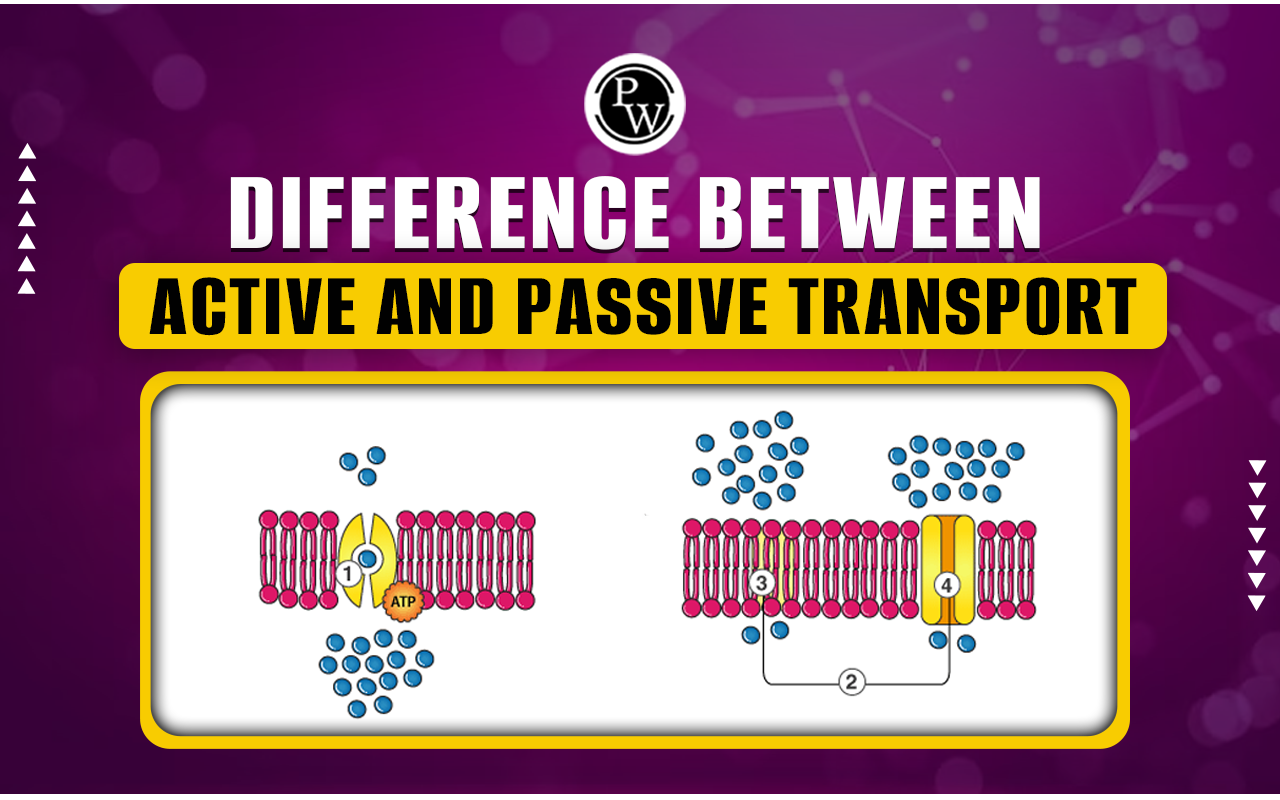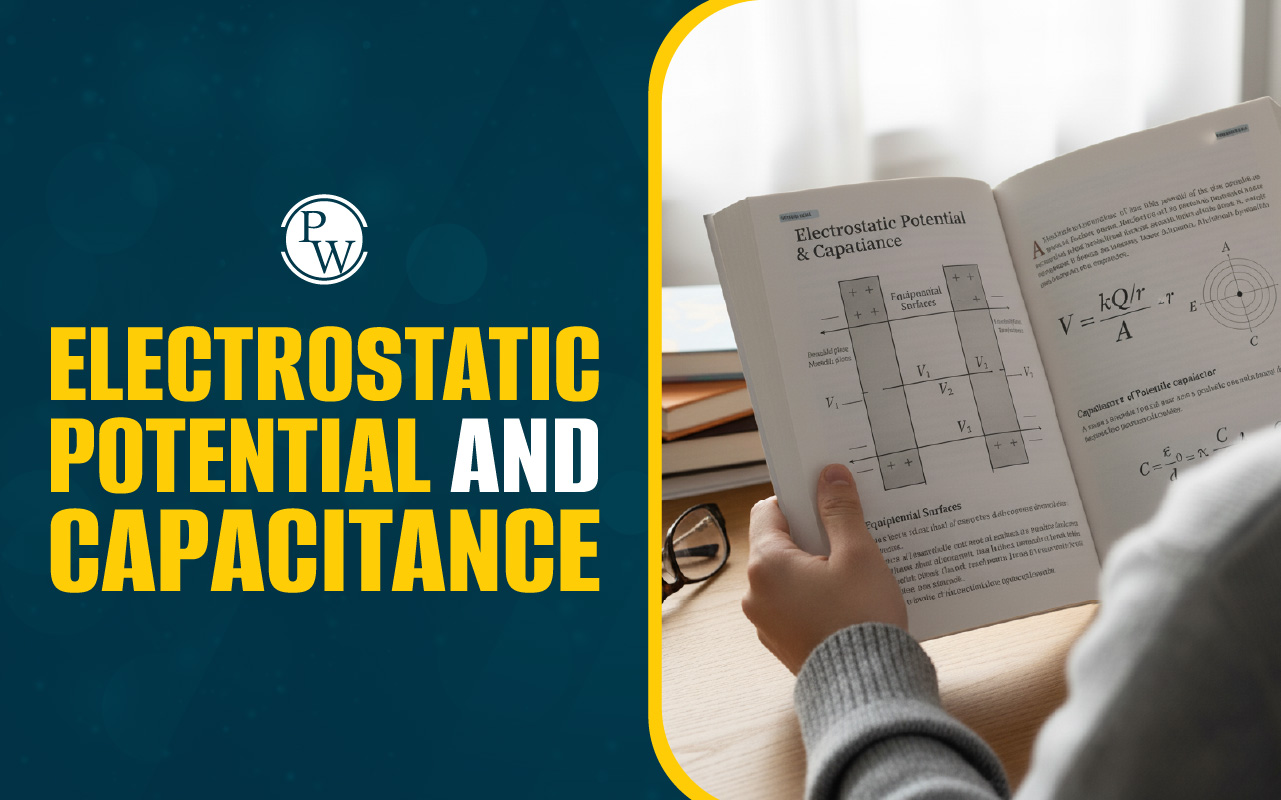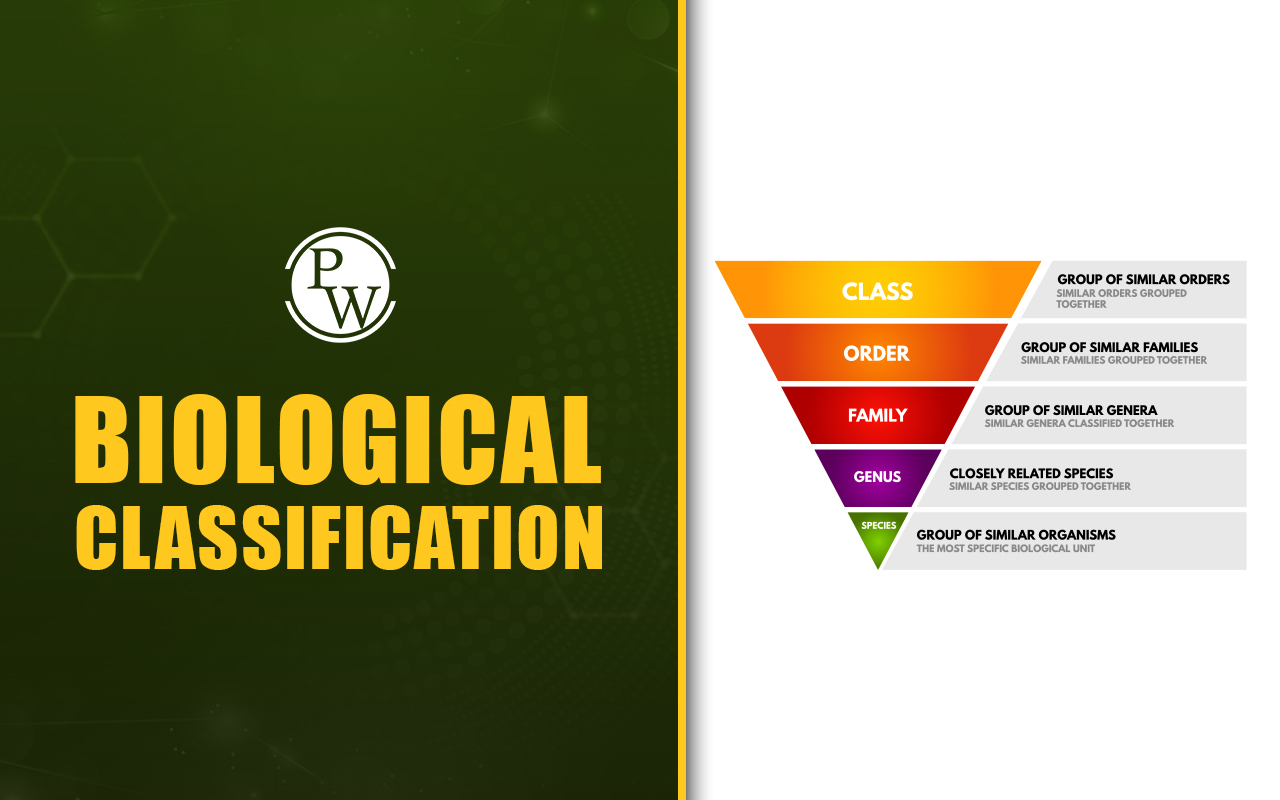

Difference between Active and Passive Transport: Active and passive transport are key processes governing substance movement across cell membranes. Active transport is fueled by adenosine triphosphate (ATP). It expends energy to move molecules against their concentration gradient, which is essential for maintaining intracellular specificity.
In contrast, passive transport lacks cellular energy and relies on particle motion. Active transport exhibits specificity, saturation, and a metabolic cost, while passive transport is less specific, generally slower, and lacks a direct metabolic expense.| NEET Biology Syllabus | NEET Biology Diagrams |
| NEET Biology MCQ | NEET Biology Chapter wise Weightage |
| NEET Biology Notes | NEET Previous Year Question papers |
Difference Between Active and Passive Transport Overview
Active and passive transport are fundamental cellular mechanisms governing the movement of substances across cell membranes. Active transport is an energy-dependent process. In contrast, passive transport relies on the natural kinetic motion of particles. Substances can move along their concentration gradient without direct cellular energy expenditure. These processes are essential for cellular homeostasis.
Difference Between Active and Passive Transport
Cellular transport mechanisms are vital for maintaining homeostasis. It encompasses active and passive transport. Active transport expends energy to move substances against gradients. It is essential for concentration maintenance and cellular functions. In contrast, passive transport relies on kinetic motion. It facilitates substance movement along gradients without cellular energy. Both processes contribute to dynamic equilibrium in cells. The table below briefly outlines the difference between active and passive transport. It highlights the role of power, movement direction, examples, protein involvement, transport rates, specificity, and saturation in shaping cellular physiology. Collectively, these mechanisms ensure the proper functioning of cells by regulating the flow of ions and molecules across membranes.|
Difference Between Active and Passive Transport |
||
|---|---|---|
| Basis | Active Transport | Passive Transport |
| Energy Requirement | It requires energy, often in the form of adenosine triphosphate (ATP). | It does not require energy from the cell; relies on kinetic energy. |
| Movement Direction | Moves substances against the concentration gradient from low to high. | Moves substances along the concentration gradient from high to low. |
| Examples | Sodium-potassium pump actively transports sodium out and potassium in. | Simple diffusion, where small molecules pass through the lipid bilayer. Facilitated diffusion involves protein channels. Osmosis is the passive movement of water across a semi-permeable membrane. |
| Protein Involvement | It involves specialized carrier proteins or pumps embedded in the cell membrane. | It may include channel proteins or carrier proteins that facilitate movement. |
| Rate of Transport | It can transport substances faster as it moves against the gradient. | Generally, it occurs slower due to its reliance on natural kinetic motion. |
| Specificity | It is mainly that carrier proteins recognize and transport certain substances. | It is less specific, with channels allowing the passage of various substances. Carrier proteins may exhibit specificity. |
| Saturation | It can become saturated when all carrier proteins are actively transported. | It may reach saturation but is generally less likely due to its passive nature. |
| Metabolic Cost | It incurs a metabolic cost due to energy utilization for active transport. | There is no direct metabolic cost since the cell does not expel energy. |
| Regulation | It is often subject to cellular control and regulation based on the cell's needs. | The concentration gradient and the availability of transport proteins typically regulate it. |
Active Transport
Active transport is an essential cellular process responsible for moving molecules across cell membranes against their concentration gradient, requiring energy input, usually in the form of adenosine triphosphate (ATP). This mechanism is essential for maintaining specific intracellular concentrations of ions and molecules. Examples are the potassium ions entering the cell and sodium ions exiting it through an active sodium-potassium pump. Active transport is fundamental for various physiological processes. Nutrient uptake, waste removal, cell volume, and membrane potential regulation.Types of Active Transport
Active transport involves the movement of molecules across cell membranes against their concentration gradient. The types of active transportation are given below.
- Primary Active Transport: This mechanism uses energy, typically adenosine triphosphate (ATP), to pump molecules against their concentration gradient. An example is the The sodium-potassium pump is a component of the cell membrane that actively moves potassium ions into the cell and sodium ions out of it.
- Secondary Active Transport: In this process, the energy required for transporting molecules is obtained indirectly from the power generated by primary active transport. The energy obtained from pumping ions against their gradient in direct active transport is harnessed to transport other substances against their concentration gradient.
Importance of Active Transport
Active transport is paramount to cellular function and homeostasis. It contributes significantly to various physiological processes. The importance of active transport is as follows.
- Concentration Gradient Maintenance: Active transport enables the maintenance of specific concentration gradients across cell membranes.
- Cellular Energetics: By utilizing energy, typically derived from ATP, active transport facilitates the movement of molecules against their concentration gradient.
- Ion Regulation: Active transport plays a key role in regulating the concentrations of ions within cells. It ensures proper cell function and signalling.
- Nutrient Uptake: Certain active transport mechanisms transport essential nutrients into cells. They contribute to cellular growth, metabolism, and overall health.
- Waste Removal: Active transport processes help expel waste products from the cell. It maintains a clean internal environment.
- Secondary Active Transport: This mechanism allows for the simultaneous transport of multiple substances.
- Cell Volume Regulation: Active transport regulates cell volume by controlling ions and water movement across the cell membrane.
Passive Transport
Passive transport is a fundamental cellular process that facilitates the movement of substances across cell membranes without the direct input of cellular energy. Passive transport relies on the intrinsic kinetic energy of particles to move concentrations from areas with higher concentrations to areas with lower concentrations. Three main types of passive transport include simple diffusion, facilitated diffusion, and osmosis. These processes are essential for maintaining cellular homeostasis. They regulate the internal environment and ensure the proper balance of ions and molecules within cells without the expenditure of additional energy.
Types of Passive Transport
Passive transport contains various mechanisms facilitating the movement of substances across cell membranes without requiring cellular energy. The types of passive transport are as follows.
- Osmosis: Osmosis involves the movement of water and other substances across a selectively permeable cell membrane. Several factors influence this transport, including the cell's less negative water potential and the cell membrane's solute and pressure potential.
- Simple Diffusion: Simple diffusion refers to the movement of molecules or solutes across a permeable membrane. Non-polar molecules mainly utilize this process, which is efficient when the distance is minimized, ensuring a smoother flow of molecules.
- Facilitated Diffusion: Facilitated diffusion is the natural, passive transport of molecules or ions across the cell membrane via specific transmembrane integral proteins. Large, insoluble molecules require carrier molecules for transportation, occurring without cellular or external energy.
- Filtration: In the human body's cardiovascular system, hydrostatic pressure facilitates the movement of water and soluble biochemical substances across the cell membrane. Termed filtration, this process selectively allows only soluble substances to pass through the membrane's pores freely.
Importance of Passive Transport
Passive transport is essential for cellular health. It enables nutrient uptake, efficient waste removal, ion balance, and overall homeostasis. This energy-efficient process ensures optimal cellular function and adaptability to environmental changes. The importance of passive transport is as follows.
- Nutrient Uptake: Passive transport includes facilitated diffusion. It allows essential nutrients to move into cells. It ensures the availability of resources for cellular processes.
- Waste Removal: Simple diffusion enables the efficient removal of waste products from cells as they move along concentration gradients out of the cell.
- Ion Balance: Osmosis regulates the movement of water. It maintains proper ion concentrations inside and outside the cell for optimal cellular function.
- Cellular Homeostasis: Passive transport processes collectively contribute to the dynamic equilibrium necessary for cellular homeostasis. It ensures a stable internal environment.
- Energy Conservation: Unlike active transport, passive transport does not require cellular energy. It conserves resources for other metabolic activities.
Physics Wallah offers a variety of NEET online courses that can help candidates crack the NEET 2024 exam. Our NEET Online Coaching program includes regular assessments, mock tests, and doubt-clearing sessions.
Difference Between Active and Passive Transport FAQs
How does active transport work?
What are two examples of passive transport?
Why is passive transport essential?
Is osmosis an active or passive process?












